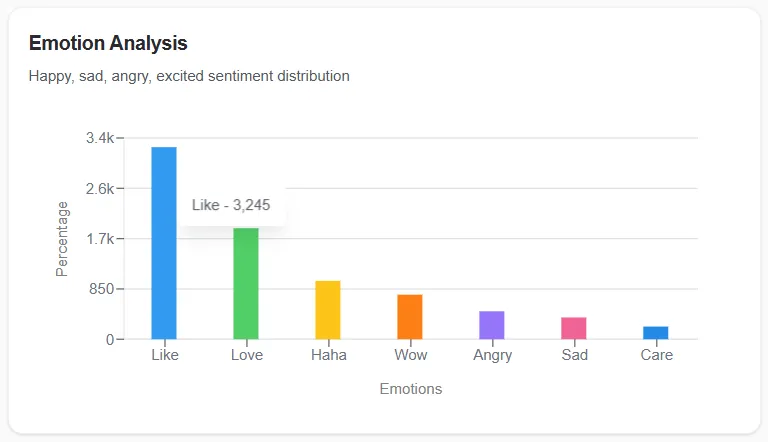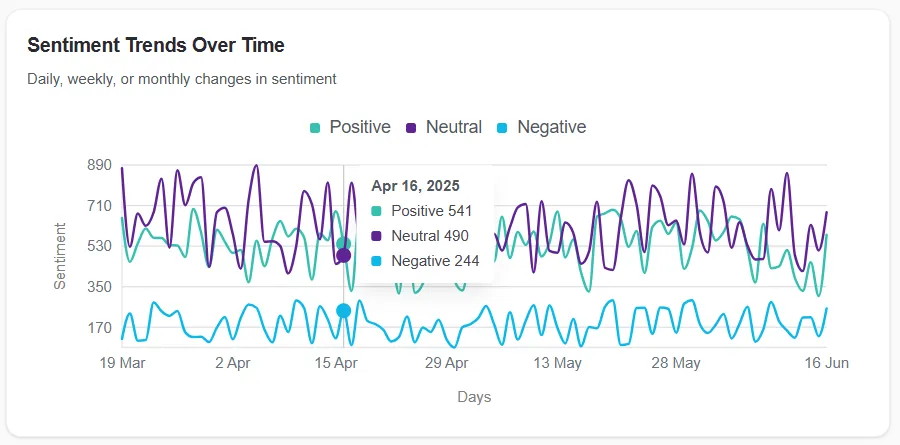We are excited to announce our $2M seed round led by Joa Capital.
Read Now

October 19, 2025
Fabiana Binte Mesbah
It takes just one viral post to shake a brand’s reputation. In an era where every like, comment, or share can influence public perception within moments, a social media crisis is no longer a matter of if — but when. The question is, are you prepared?
In this guide, we’ll walk through a practical step-by-step plan for managing a social media crisis effectively, using tools, strategies and insights that not only control the damage but also turn it into an opportunity for building deeper customer trust.
As of 2024, more than 6 out of 10 people worldwide are active on social media. What’s more, 71% consumers are likely to recommend a brand if they’ve had a positive experience with it on social media. So, for your brand, this can be a massive opportunity, but if not handled well — a serious risk.
The stakes are higher than ever — your reputation, your revenue, and your resilience all hang in the balance. Here’s your detailed guide to manage crises across social media (or any customer engagement platforms):
The best defense is preparation. A strategically crafted social media plan can help your team act swiftly and stay aligned when a crisis strikes. At minimum, your plan should include:
Crisis-ready organizations tend to recover faster. And you have no time to spare since nearly 40% of customers expect a response on social media within just an hour. Having a clear, accessible playbook ensures your team can act quickly, communicate consistently, and manage the situation before it escalates.
Many crises don’t explode instantly — they build up through unnoticed mentions, negative comments, or viral misinformation. That’s why early detection is critical.
AI-driven social listening tools like Brandwatch and DeepDive are designed to scan public conversations across customer engagement platforms, and flag unusual spikes in sentiment, volume, or engagement in real-time. Instead of waiting for headlines, these tools help brands spot smoldering issues before they catch fire.

For example, if DeepDive detects a sudden uptick in negative mentions tied to a new product launch, your team can investigate and respond before the sentiment snowballs.
Timing is everything. A good rule of thumb? Respond within the first 1–2 hours of the crisis going public — even if it’s just a holding statement. But speed must be matched by sincerity. Here’s a few more pointers to keep in mind:
Added to these, consider the best platform to respond to ensure maximum reach and a deeper connection with your audience. Customize your tone for different platforms. What works on LinkedIn might not work on Instagram Stories.
Silence, inconsistency, or off-brand messaging can worsen the crisis. Your internal stakeholders, especially your customer service and sales teams, need real-time updates and messaging guidelines.
This can include:
Social media crises often create a spike in customer DMs, comments, and questions. Having a consistent response structure across your customer engagement platform ensures your team doesn't add fuel to the fire.
You simply can not snooze once your initial response is live. Monitoring the public’s reaction to your response is just as important. Are things improving? Are influencers or news outlets weighing in?
This is where brand health tracking becomes essential. AI-powered social listening tools can help by analyzing:

Rather than checking mentions manually, these insights help your team adapt messaging, reinforce clarifications, and avoid missteps during the critical hours.
After the dust settles, don’t just move on — debrief thoroughly. Understanding what happened, why it happened, and how your team performed is essential for long-term resilience.
Your review should answer:
Feed these insights back into your crisis protocol. Consider running simulations or training drills quarterly to keep your team sharp.
In 2018, Starbucks faced backlash after two Black men were wrongfully arrested at a Philadelphia store, igniting public outrage online. Similar to many other cases, by using social listening, the brand tracked sentiment and key hashtags to gauge the fallout in real time.
Their response was swift: a public apology, the closure of 8,000 stores for racial bias training, and direct online engagement with concerned customers. While the incident hurt the brand initially, sentiment analysis showed a steady recovery as Starbucks demonstrated accountability.
The key takeaway? Real-time social listening paired with transparent action can soften reputational damage and rebuild trust.
A social media crisis can unravel months of brand building in just hours. But with the right mix of a robust social media plan, real-time monitoring across customer engagement platforms, brand health tracking and authentic engagement, you can protect — and even strengthen — your reputation.
Today’s landscape demands more than just a reactive strategy. AI-powered social listening tools make it possible to detect risks earlier, understand public sentiment deeper, and respond smarter. Check out DeepDive as a smart addition to your modern toolkit for managing brand resilience. Stay alert, stay human, and most importantly — stay prepared.
Discover How Audience Intelligence can help your brand grow